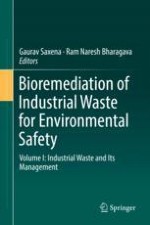2020 | OriginalPaper | Chapter
5. Bioremediation of Distillery Effluent: Present Status and Future Prospects
Authors : Sushil Kumar Shukla, Vinod Kumar Tripathi, Pradeep Kumar Mishra
Published in: Bioremediation of Industrial Waste for Environmental Safety
Publisher: Springer Singapore
Activate our intelligent search to find suitable subject content or patents.
Select sections of text to find matching patents with Artificial Intelligence. powered by
Select sections of text to find additional relevant content using AI-assisted search. powered by
